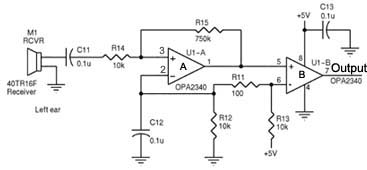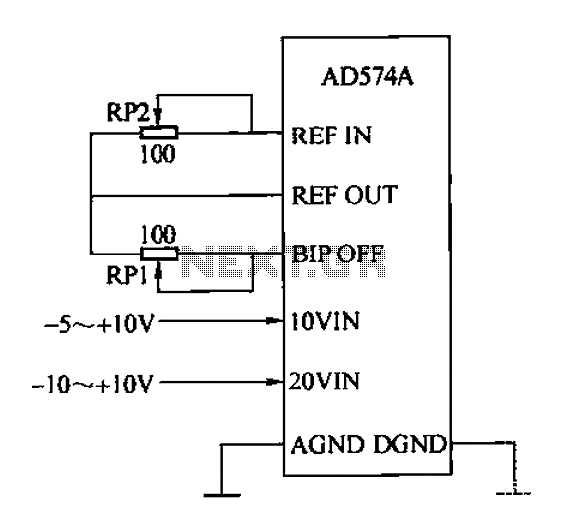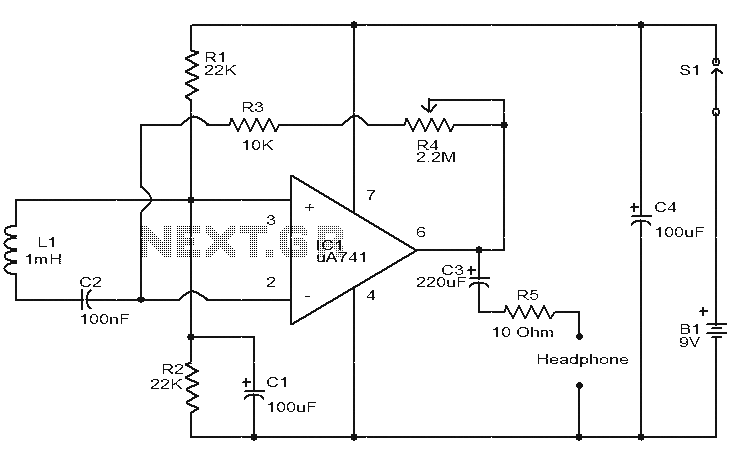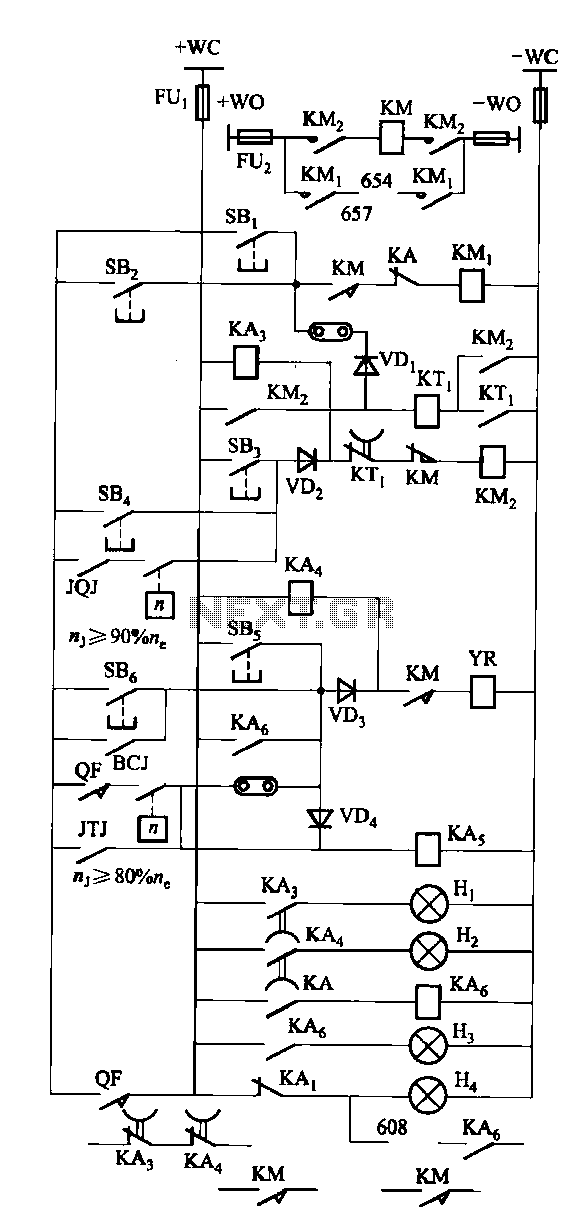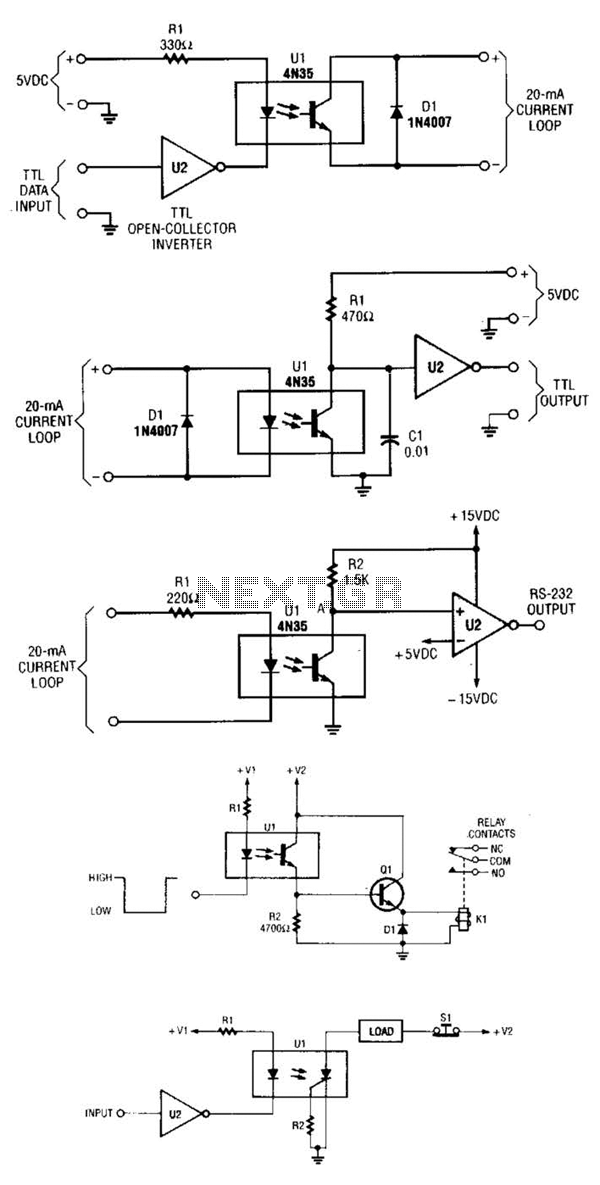
Restructuring of the pitch by the pitch selector circuit
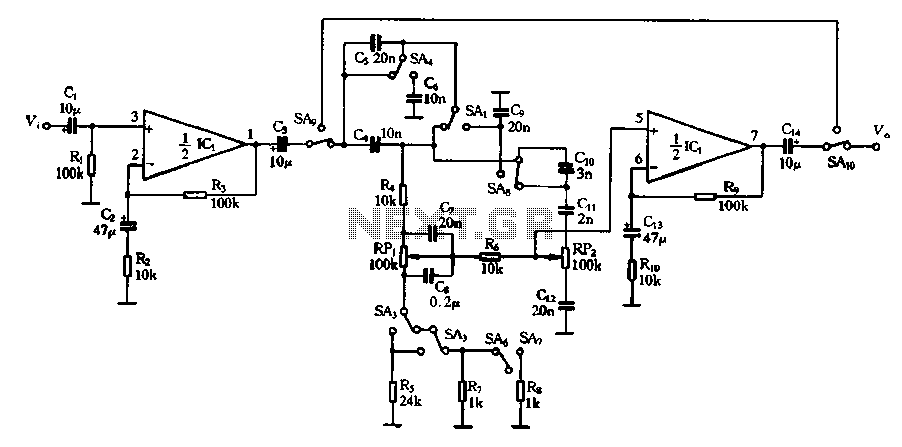
Figure 4-13 illustrates a modified version of a standard attenuated tone control from the pitch selector. It features two amplification stages of amplifiers 10 and Icl utilized as line amplifiers. Capacitor C2 is employed to compensate for tone attenuation caused by the circuit's networks. The potentiometer remains functional, but its adjustment range is limited; it can be utilized to correct the frequency response curve for various applications. When the language key (SAi) is pressed, it triggers the action of SAi, allowing capacitor C4 to connect, which attenuates the bass while bypassing the treble. Activating switch SA2 replaces resistor R7 with Rj, increasing resistance and enhancing midrange gain. Pressing the concert button (SA3) activates both SA3 and SA4; SA3 produces a rainbow effect, while SA4 connects capacitor C5 in parallel with C4, providing a slight lift to both high and low frequencies. When the orchestral key (SA6) is pressed, resistor R7 is connected in parallel, resulting in reduced midrange gain and improved high frequency response. Pressing the bass key (SA7) has a similar effect to SA6, reducing tenor frequencies while capacitor C11 in series decreases treble, leading to midrange attenuation. Activating the straight distressed key (SAg) disconnects the entire tone network, allowing the signal from the amplifier stage to pass through a linear pathway, preserving the original sound signal. The two circuits utilize high-performance operational amplifiers, specifically the OP275, which offers a conversion rate of up to 22V/µs, ensuring excellent sound quality. Alternatives such as QP249 or NE5532 can also be employed.
The circuit design in Figure 4-13 employs a sophisticated tone control mechanism that allows for precise adjustments to the audio output. The use of operational amplifiers like the OP275 ensures that the circuit maintains high fidelity and low distortion, which is crucial for audio applications. The configuration of the tone control is such that it provides versatility in sound shaping, accommodating various user preferences for bass, midrange, and treble frequencies.
The inclusion of multiple switches (SAi, SA2, SA3, SA4, SA6, SA7, and SAg) enables the user to easily toggle between different tonal settings, enhancing the overall user experience. Each switch modifies the circuit's response by either introducing or bypassing specific components, thus allowing for tailored adjustments. For instance, the action of SAi not only connects capacitor C4 but also influences the overall tonal balance by managing bass and treble levels, which is essential for achieving the desired sound profile.
The circuit's ability to maintain a straight path for the audio signal when the straight distressed key is activated is particularly noteworthy. This feature preserves the integrity of the audio signal, making it ideal for situations where clarity and authenticity of sound are paramount. The design's adaptability to various operational amplifiers provides additional flexibility, allowing engineers and designers to customize the circuit based on availability and specific performance characteristics desired in their applications.
Overall, this tone control circuit exemplifies a well-engineered solution for audio signal processing, combining functionality with high-performance components to meet diverse acoustic requirements.Figure 4-13 is an adaptation of a common attenuated tone control from the pitch selector. It consists of two magnifications of each of the amplifiers 10, Icl used as a line amp lifier, l [C2 is used to compensate for attenuation o tone caused by networks in this circuit, the potentiometer still works, but the adjustment range than the narrow, it can be used to correct the frequency response curve of each file, in order to meet the needs of different people o in the circuit, when you press the language key, SAi, also deputy action, SAi make C4 access, bass is attenuated, Island makes the treble is bypassed, SA2 make Rj instead of R7, resistance increases, midrange gain is increased. When you press the concert button. SA3, SA4 action, SA3 rainbow effect with just the same, SA4 will c5 in parallel with the C4, while access circuit, high and low only for a small amount of lift o Press the orchestral key, SA6 action, R7 connected in parallel, the alkali resistance is small, midrange gain reduction, improved relatively high, bass o press bass is key, SA7, S} .e action, SA7 role and SA6 same tenor reduce, gb so clo .c11 series, capacity is reduced, treble attenuation, bypassing the island make midrange attenuation.
press the straight distressed key, SAg, SAio action, the whole tone disconnected from the network, the signal from the amplifier stage straight-line after a pass grade enlarge clamor, the sound signal remains original. The two circuits are assembled using high-performance op amp OP275, the circuit conversion rates up to 22V/Us, poles Voice good.
Can also be used QP249, or NE5532 also o
The circuit design in Figure 4-13 employs a sophisticated tone control mechanism that allows for precise adjustments to the audio output. The use of operational amplifiers like the OP275 ensures that the circuit maintains high fidelity and low distortion, which is crucial for audio applications. The configuration of the tone control is such that it provides versatility in sound shaping, accommodating various user preferences for bass, midrange, and treble frequencies.
The inclusion of multiple switches (SAi, SA2, SA3, SA4, SA6, SA7, and SAg) enables the user to easily toggle between different tonal settings, enhancing the overall user experience. Each switch modifies the circuit's response by either introducing or bypassing specific components, thus allowing for tailored adjustments. For instance, the action of SAi not only connects capacitor C4 but also influences the overall tonal balance by managing bass and treble levels, which is essential for achieving the desired sound profile.
The circuit's ability to maintain a straight path for the audio signal when the straight distressed key is activated is particularly noteworthy. This feature preserves the integrity of the audio signal, making it ideal for situations where clarity and authenticity of sound are paramount. The design's adaptability to various operational amplifiers provides additional flexibility, allowing engineers and designers to customize the circuit based on availability and specific performance characteristics desired in their applications.
Overall, this tone control circuit exemplifies a well-engineered solution for audio signal processing, combining functionality with high-performance components to meet diverse acoustic requirements.Figure 4-13 is an adaptation of a common attenuated tone control from the pitch selector. It consists of two magnifications of each of the amplifiers 10, Icl used as a line amp lifier, l [C2 is used to compensate for attenuation o tone caused by networks in this circuit, the potentiometer still works, but the adjustment range than the narrow, it can be used to correct the frequency response curve of each file, in order to meet the needs of different people o in the circuit, when you press the language key, SAi, also deputy action, SAi make C4 access, bass is attenuated, Island makes the treble is bypassed, SA2 make Rj instead of R7, resistance increases, midrange gain is increased. When you press the concert button. SA3, SA4 action, SA3 rainbow effect with just the same, SA4 will c5 in parallel with the C4, while access circuit, high and low only for a small amount of lift o Press the orchestral key, SA6 action, R7 connected in parallel, the alkali resistance is small, midrange gain reduction, improved relatively high, bass o press bass is key, SA7, S} .e action, SA7 role and SA6 same tenor reduce, gb so clo .c11 series, capacity is reduced, treble attenuation, bypassing the island make midrange attenuation.
press the straight distressed key, SAg, SAio action, the whole tone disconnected from the network, the signal from the amplifier stage straight-line after a pass grade enlarge clamor, the sound signal remains original. The two circuits are assembled using high-performance op amp OP275, the circuit conversion rates up to 22V/Us, poles Voice good.
Can also be used QP249, or NE5532 also o
